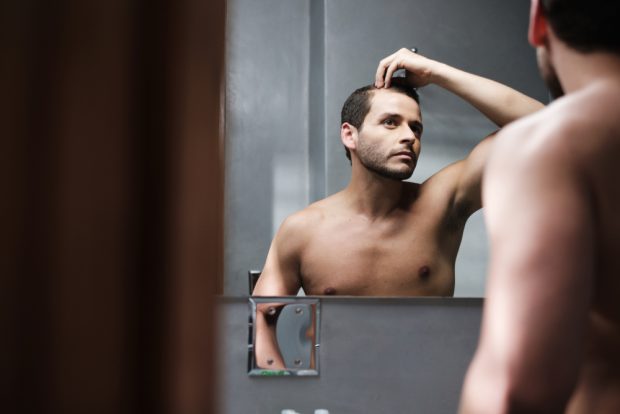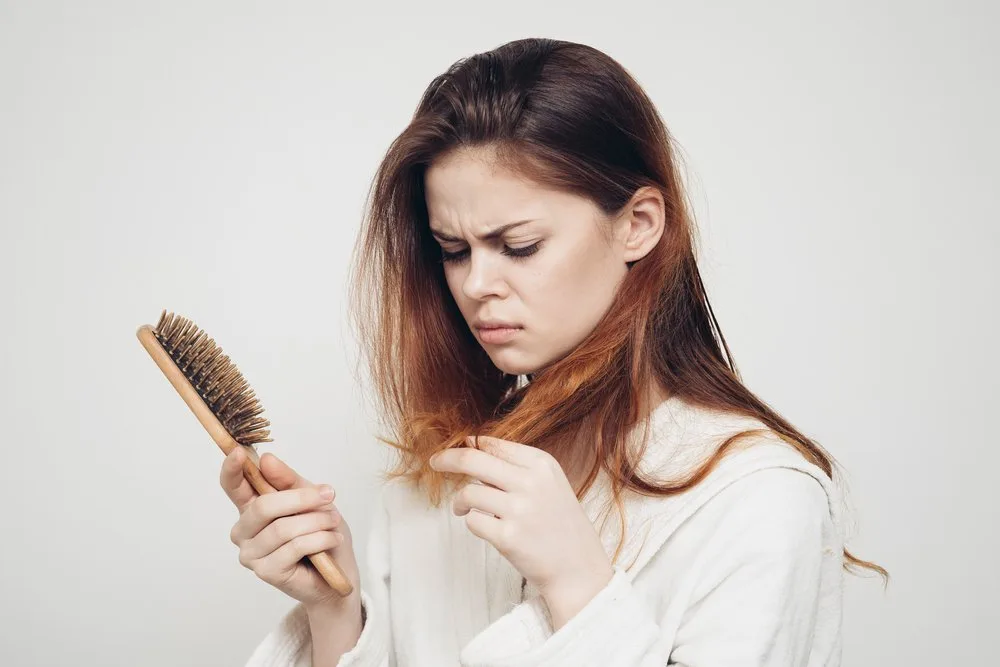Experiencing hair loss at any age or stage of life can be devastating. Not only can it have a negative impact on your self-esteem, but it can also cause stress and have significant ramifications. Hair loss among women is a surprisingly prevalent problem. It’s important to note that not all hair loss is due to alopecia, it can be related to other stressors.
Is it alopecia? Or another type of hair loss?
But how do you know whether what you’re dealing with is the onset of alopecia or just a more temporary case of hair loss? There is no doubt that many women see their hair as a vital part of who they are. Whether you wear it short or long; whether you clip it up or wear it down, your hair is an integral part of you. Most of us, myself included, would do almost anything to protect and improve it. So what should you do if your hair starts to fall out? Is it treatable and can it be reversed?
Though alopecia is what we most commonly think of when talking about hair loss, there is more than just one type of hair loss. In fact, there are a vast amount of different types of hair loss, and it’s vital that you know what you’re dealing with before you turn to possible treatments. It’s always best to go to your doctor to check which type of hair loss you’re dealing with.
Diseases that cause hair loss
Alopecia
Probably the most common type of hair loss, alopecia areata, is an autoimmune condition that affects around 7 million people in the US alone. Alopecia areata can impact people of any age, gender, or ethnicity. It can begin in childhood but sometimes only present later in life, which is often a shock to the sufferer.
It also isn’t limited to the scalp; in some cases, your eyebrows, eyelashes, face, and even other parts of the body can be impacted. However, when it influences the whole body, it’s referred to as Alopecia Universalis. Though alopecia is currently incurable, in some cases, the hair does grow back. But even if it does grow back, that doesn’t necessarily mean that you won’t experience hair loss again in the future.
Cicatricial Alopecia
This is a much rarer form of alopecia and is commonly referred to as scarring alopecia. In this case, inflammation destroys the hair follicles and scar tissue forms where the follicles were. Once the scar tissue has formed, the hair won’t regrow. Hair loss as a result of Cicatricial Alopecia can either begin slowly, but in some cases, the hair falls out all at once.
Symptoms include ‘severe itching, swelling, and red or white lesions on the scalp which often look like a rash’. It can occur at any age and affects both men and women.
Types of Cicatricial Alopecia
Treatment is available, but often depends on the type of cicatricial alopecia:
Lichen Planopilaris
This occurs when a relatively common skin condition called lichen planus affects the scalp. It causes a dry, flaky rash, and hair tends to fall out in clumps. It isn’t common and tends to affect more women than men
Discoid Lupus Erythematosus
A type of cutaneous lupus is an autoimmune disease that impacts the skin. It can lead to inflammation, sores, and scarring on the ears, face, and scalp. Hair loss is just one symptom of the disease. Hair cannot grow back as a result of the formation of scar tissue
Folliculitis Decalvans
It’s an inflammatory disorder that leads to the destruction of hair follicles. It often results in redness, swelling, and even lesions on the scalp.
Though it isn’t reversible, “dermatologists can offer medication to control symptoms and, in some instances, stop the progression of hair loss”.
Dissecting Cellulitis of the Scalp
A rare condition called Dissecting Cellulitis in the scalp can cause pustules or lumps to form on the scalp. This may result in the formation of scar tissue, causing hair loss and destroying hair follicles.
Symptoms can be controlled through medication but the hairless can’t be reversed.
Frontal Fibrosing Alopecia
It typically looks like a receding hairline and can also result in the loss of eyebrows and underarms. It most commonly affects postmenopausal women. Symptoms can be managed and the progression of the disease can be stopped. The cause of Frontal Fibrosing Alopecia is currently unknown
Central Centrifugal Cicatricial Alopecia
This occurs as a direct result of hair products and styling techniques that damage the hair follicles. Relaxers, blow dryers, curling irons, extensions, and perms can all cause Central Centrifugal Cicatricial Alopecia. It is reversible if the damage to the hair is stopped. Dermatologists typically recommend medication to assist with hair regrowth.

engagestock/shutterstock
Tinea Capitis
Often referred to as scalp ringworm, Tinea Capitis is a fungal infection of the scalp. It is most commonly present in children, causing hair to fall out. Hair might fall out in patches that can be circular and lead to bald spots that increase in size over time. Affected areas tend to look red or scaly and cause the scalp to itch. As the immune system tries to fight the infection, it typically results in a low-grade fever and swollen glands. This is easily treated by a dermatologist, who will prescribe anti-fungal medication.
The great news is, if you catch it early, hair usually regrows quickly and normally.
Other causes of hair loss
Loose Anagen Syndrome
Most common in young children, it occurs when the hair is not firmly rooted and the follicle is thus easily pulled out. In most cases, the hair tends to fall out once it has reached its maximum length (which is variable) but tends to result in hair not growing past a relatively short length. It most commonly affects girls with brown or blonde hair.
Even when it’s growing, hair can fall out easily and hair loss can become more prevalent overnight due to the friction of the hair on the pillow. The cause is, as yet, unknown, though some studies indicate that it “may be related to a disorder in the hair growth cycle that prevents hair from staying in the follicle”. There are very few reliable treatments, but the condition tends to improve after puberty hits, and there are some medications that can assist.
Trichotillomania
People that suffer from trichotillomania pull out their hair compulsively and find it difficult to stop doing so. It is most prevalent with hair on the scalp, but can be anywhere on the body. If the behavior is stopped, hair most commonly grows back normally.
However, if allowed to continue for many years, hair loss can become permanent. Treatments for this include psychotherapy, where you speak to a counselor to get to the root cause of the stress and what causes the need to pull out your hair.
Stress and emotional shock
A sudden physical and/or emotional shock can result in the loosening of the hair. This often results in handfuls of hair coming out and can be extremely distressing. Hair most typically tends to fall out during washing, brushing, or combing. When hair is loosened from the follicle, even a gentle tug can cause the hair to fall out.
Generally, this causes overall thinning but is generally temporary and with a combination of treatment of stress and topical hair treatments can resolve relatively quickly. Hair will mostly grow back normally, and it won’t lead to permanent hair loss.
What are some of the common treatments for hair loss?
Before moving forward with any type of treatment, it is always best to seek advice from a medical professional, as they will be able to advise the best course of action for your specific hair loss. Treatments that may help your hair grow back more quickly and that can prevent future hair loss are becoming much more widely available and, of course, there are ways to cover up hair loss such as wigs.
Topical treatments such as Minoxidil, Anthralin (Dritho-Scalp), Corticosteroid creams, and Topical immunotherapy can all help. However, you should consult a doctor before using any of these options as they will be able to advise which, if any, will suit you best.
Steroid injections are also a common way to treat mild, patchy alopecia to help hair grow back on bald spots. However, it needs to be repeated every 1 to 2 months to regrow hair and doesn’t prevent any further hair loss. Steroid injections can be dangerous and definitely aren’t suitable for everyone. Oral treatments need to be prescribed by your doctor but can include Cortisone tablets or Oral immunosuppressants, like methotrexate and cyclosporine.
Laser treatment delivers specific doses of radiation to encourage new hair growth and is generally considered a safe option.
Natural Options
Though not scientifically tested, natural remedies include treatments like acupuncture, aromatherapy, vitamins, and supplements such as zinc and biotin, essential oils, coconut oil, tea tree oil, and castor oil. A healthy and balanced diet has also been proven to aid in the treatment of alopecia.





![women [longevity live]](https://longevitylive.com/wp-content/uploads/2020/01/photo-of-women-walking-down-the-street-1116984-100x100.jpg)









